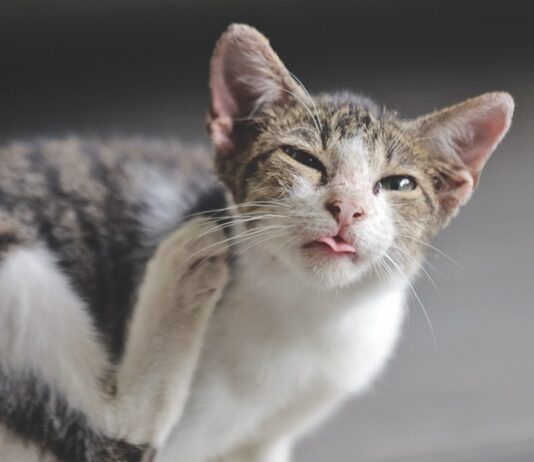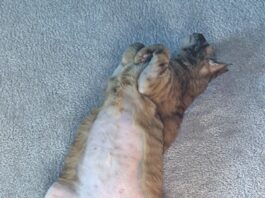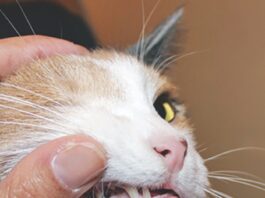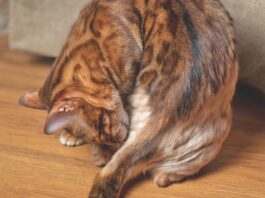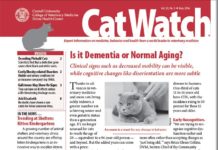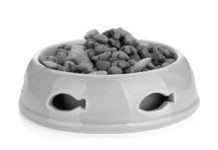Acupuncture for Cats Heads Mainstream
Dusty was a black and white cat who hissed, swatted and squirmed anytime a veterinarian or technician tried to restrain her for an examination or, worse, tried to draw blood or give an injection. This same cat, however, transformed into a picture of serenity and calm during acupuncture treatments.
The Number 1 Reason for Lackluster Coats
Fur, primarily made of the protein keratin, grows from follicles in the skin. While human follicles each grow a single hair, animal follicles may grow many. Each follicle has an oil gland to lubricate the skin and hair, and to keep the coat lustrous. If your cats coat turns dull and dry, you may suspect a medical problem and make a veterinary appointment. Meanwhile, you might also want to check the labels on his food.
An Exciting New Frontier in Medicine
Your arthritic cat walks stiffly, and its difficult to find a medication to treat him without side effects. Could stem cell therapy be an option? Its use in human medicine has grown in the past decade, heralded as a promising treatment for a host of diseases. The latest area of pioneering research, according to the National Institutes of Health, is adult-derived stem cells for repair of the heart.
No Surprise: Canine Flu Jumps Species to Cats
At last count, at least four cats at a Northwest Indiana animal shelter have tested positive for canine influenza - one of the first times the flu strain H3N2 has jumped species in the U.S. Other cats and dogs at the Humane Society Calumet Area showed similar signs of the respiratory disease, as well as lip smacking and excessive salivation, and the shelter temporarily closed.
Download the Full May 2016 Issue PDF
Advances in treatments are helping people born with congenital heart disease live longer and with greater quality of life. But not all structural problems with the heart can be permanently fixed in childhood. In fact, many treatments that help get these patients into adulthood often need revisiting later in life. Being born with congenital heart disease means being always mindful of your heart health. Some of these individuals, because they have been heart patients their whole lives, are mindful of their diet, exercise and risk factor control.
Inhalant Allergies Target the Skin
Your cat is scratching, licking away sections of fur. His head, neck and ears itch. With the arrival of spring, you might suspect a flea infestation, but more likely allergies to airborne substances could be to blame. The usual suspects - pollens, molds and dust mites - can cause inflammation of the skin called feline atopic dermatitis (AD).
FDA Warns Topical Drug Poses Toxic Risk to Cats
The Food and Drug Administration has issued a warning about pets exposure to a topical non-steroidal anti-inflammatory (NSAID) drug after reports of deaths and illness in cats. Their owners had applied flurbiprofen cream or lotion to their own neck or feet to treat pain.
Reducing the Risk of Food-borne Illness
Demystifying the ingredients in commercial food is only one step in providing a healthy diet for our cats. The ongoing challenge is preventing the spread of food-borne illness to animals and people in the household. At last count, manufacturers had recalled five of six dog and cat foods this year because of possible contamination with the bacteria salmonella. The sixth recalled food was suspected of containing the bacteria Listeria monocytogenes that can also cause serious infection in humans and animals.
Ask Elizabeth: November 2014
Q. Our year-old male cat, found at a county animal shelter seven months ago, has been diagnosed with eosinophilic granuloma complex (EGC). His symptoms are incessant scratching, puffy gums, blistering mouth, swollen front paw, lameness, limping. Our veterinarian has prescribed steroids for him, and these have been somewhat helpful, but can you explain this disease so that we can better understand what is going on? …
Those Lovely Lilies? Theyre Lethal
A touch of green around the house during a long, cold winter provides a reminder of spring and creates a festive mood for the holidays. Although plants like lilies are lovely, the effects on a cat who ingests them are decidedly not. In the case of lilies of the Lilium species, cats can suffer potentially fatal kidney failure.
Quick Action at Home Can Stop the Growth of Hot Spots
Within hours, you notice that your cat has developed a red, raw, damp, hairless spot and it’s spreading. It looks like a scrape you’d get falling off your bike. The likely diagnosis: a hot spot. Cats with underlying skin diseases — usually allergies — are candidates for quickly developing hot-spot-type lesions, says dermatologist William H. Miller, VMD, Medical Director of the Companion Animal Hospital at the Cornell University College of Veterinary Medicine. Allergic animals feel itchy but may focus on a particular spot as they lick, rub, scratch, and bite, and in the process can pull out fur. The bare patch can quickly grow in size. What to do?
A Simple Way to Check the Ears
Hearing is one of a cat’s most important senses. Keeping the ears healthy can help prevent painful infections from developing — chronic infections that could damage the ear canal or eardrum and lead to deafness. Checking the condition of your cat’s ears is as simple as stroking them, says dermatologist William H. Miller, VMD, Medical Director of the Companion Animal Hospital at the Cornell University College of Veterinary Medicine. As you rub the ears, you can easily notice if your cat shows signs of discomfort or extreme pleasure. Both instances are a clue that closer inspection is necessary.

